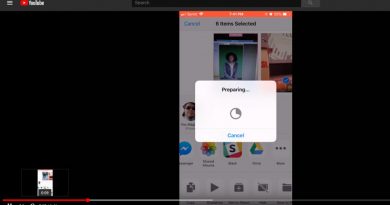The A-Z Lessons For Broadcast Students (And Really All Journalism Students) From a Broadcast Adviser Finishing Year 20
This school year marks two decades of being the adviser of Blue Jay Journal TV (www.bluejayjournal.com). It’s been an incredible part of my life and career. The relationships I have formed with students, families and people within our community have enriched my life in so many ways.
Along the way I have gained a few kernels of knowledge that I would to love to share.
Always thank the people you interview.
Be prepared in the field. Test your equipment BEFORE you head out on assignment.
Care about the stories you are telling. If you don’t care, why would your audience?
Don’t give up. Broadcast isn’t easy. With time and persistence you will learn so much and improve!
Find ways around obstacles. Example: If someone isn’t responding to an email request, perhaps you need to pick up a phone and call them instead. (Hint, us older people prefer to hear a human voice at times instead of just reading words sent from a random email address we’ve never seen before.)
Go deeper than the 5 W’s and the H. Find the “heart” of the story! (I highly recommend you read Al Tompkin’s book titled Aim for the Heart.)
Have a heart. Empathy will go a long way and show in your storytelling.
Inspire others on your staff by being a hardworking team player who meets deadlines and picks up the slack when needed.
Just go for it and MOVE! Don’t assume your stories will tell themselves. You will have to get out of your chair, classroom, and even your school to produce a great story!
Know a little bit of everything. Be the staff member who works the camera, can do voice work, write a script and edit video. The more you learn about the process, the better you will be.
Lazy doesn’t cut it. Lazy has no place in the newsroom or on your staff.
Move for creativity. Physically move. Write out ideas on paper. Sketch scenes on a storyboard. Walk around a little bit. Moving gets the creative thought process flowing. Using those “analog” items like pen and paper instead of staring a screen can really help you THINK.
Never do interviews without a microphone. Audio matters!
Operate all the equipment you possibly can. Be a hands-on staff member.
Push yourself outside of your comfort zone. Success is often found there.
Quitters never win and winners never quit.
Risks often pay off. (See the letter P if you are confused by this.)
Shoot sequences! Wide, medium, tight, close up, and cutaway shots are important in EVERY story!
Tripods are critical. Put the camera on a tripod, set up your shot, press record and let go. Let the tripod work its magic.
Great stories are Ubiquitous, but that doesn’t mean we should use that word in broadcast. In broadcast journalism reporters shouldn’t use words that utterly confuse half (or more) of the audience. Be conversational, clear, and concise in your writing, but as a reporter – DO NOT LOSE YOUR AUDIENCE WITH WORDS THEY DO NOT USE or KNOW!
Video editing platforms are your friends. Learn how to use them. From iMovie to Final Cut to Adobe Premiere, there are many options out there. However, here’s a bonus: You need to have solid video footage before you edit. All the special effects in the world won’t save a bad shot sequence or an interview that goes nowhere. Content is king!
White balance video. If you mess up in the field, then do it in edit.
eXpect the worst and you’ll often get it. Your mindset and outlook is critical.
You are not the subject of the story. You are the reporter. Step back and let others have a voice.
Zany ideas shouldn’t always be discredited. Sometimes story ideas may be seen as completely off the wall, but maybe there is something there to pursue. Be open-minded and entertain even the zany, wacky, and unique story ideas. Example: My students did a story about “Dylan Drinks Water.” A student with his own water-drinking YouTube channel. Who knew this would be one of my favorite stories ever!?





